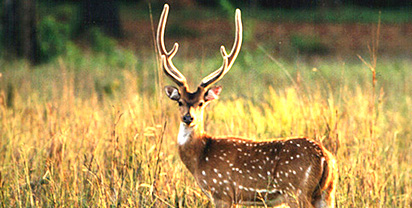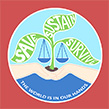Home » Activities in Mumbai » About Sanjay Gandhi Park
About Sanjay Gandhi Park

Biodiversity
The rich and diverse forest holds more than one thousand species of plants, 40 species of mammals, 251 species of birds, covering migratory, land and water birds, 38 species of reptiles, 9 species of amphibians besides a large variety of fishes.

The park is a tree lovers delight in all seasons with the great amount of bio-diversity, ranging from Adina cardifolia (kadamb), Albizzia lebbek (Shirish), Pongamia pinnata (Karanj), Tectona grandis (Teak) Dalbergia latifolia (Sishum) to Acacia, Zizyphus and evergreen patches of Euphorbia . In the dry month of February to May, spectacular flowering of Butea monosperma (Flame of Forests) is a real feast to eye. Flowering of Bombax malabaricum (Semal) and Erythrina indica (Indian coral tree) add colour.There are large patches of Bamboo, which make the feel of the jungle even better. The forest has a lot of Liana (woody climbers), a remnants from wetter evergreen past, many species of orchids and a large variety of shrubs. Every monsoon is a riot of colors from violet of Zingiberaceae species to the stark white of costus species. Among the many spectacular sights one that is definitely is most worthy, is seven years mass flowering of Strobilanthus species (Karvi). Thousands and thousands of these flowers cover the hill slopes giving purple touch to this beautiful landscape.

The national Park is a bird watcher paradise. From the tiny Tickell's flower pecker(small bird in India), many species of sun bird (humming birds) to the majestic white bellied sea eagle, it is virtual visual feast with birds like paradise flycatcher, the elusive Trogon, many species of Kingfishers, Woodpeckers, and Drongos. The continuous calling of large green barbet, the wildly screeching parakeets,the metallic calls of the Racket-trailed Drongo, the musical call of the Blue flycatcher or the extremely melodious song of the Malabar whistling thrush or the familiar refrain of the Spotted babbler are just a few facets of nature's symphony in this forest. The Reptilian world is well represented from Crocodiles in Tulsi lake to Monitor lizards to Pythons, Cobras, Russess' viper, Bamboo pit viper and the extremely rare Ceylonsese cat snake recently discovered by the staff of Bambay National History Society. Smaller reptiles add to the wonder of this part. The invertebrate world from Crabs to Spiders to insects, Giant wood spiders, Signature spiders, Black wood spider with their large webs in monsoon are a real treat. The insect world from Silk cotton bugs to Beetles to various kinds of Mantis.
The Butterfly world is represented in such a fascinating range of sizes and colours, from the spectacular Blue Mormon to the phenomenal artist of camouflage the Blue Oak leaf, the bright jezebels and Large Yellow and White Orange tips, Monarchs, Egg flies, Sailors are some of the many attractive butterflies one can find here.

The Kanheri caves located well within the park area is a major point of interest, presenting an accessible and interesting glimpse of the history and the culture of Buddhist India. Most of these 109 Buddhist caves, chiseled out of the volcanic rock are simple small chambers, known as viharas (cells for monks). A few are larger and deeper chambers known as chaityas(for congregational worship). The main one which has colossal figures of standing Buddha, 7 m. in height, on each side of the entrance porch, a colonnade of 34 pillars surrounding the interior halls and stupa (shrine) at the far end, all carved from the stone in place. These caves are dated from 1st century B.C. to 9th century A.D., indicating a well organized Buddhist establishment of monks existed on an ancient trade route connecting a number of trade centers & Indian ports. In this area there are nearly more than 100 inscription, out of these, three are in Pallavis, two in sanskrit, one in Devnagri & rest are in Brahmi script.
source website :
http://www.mahaforest.nic.in/place_detail.php?place_id=7

